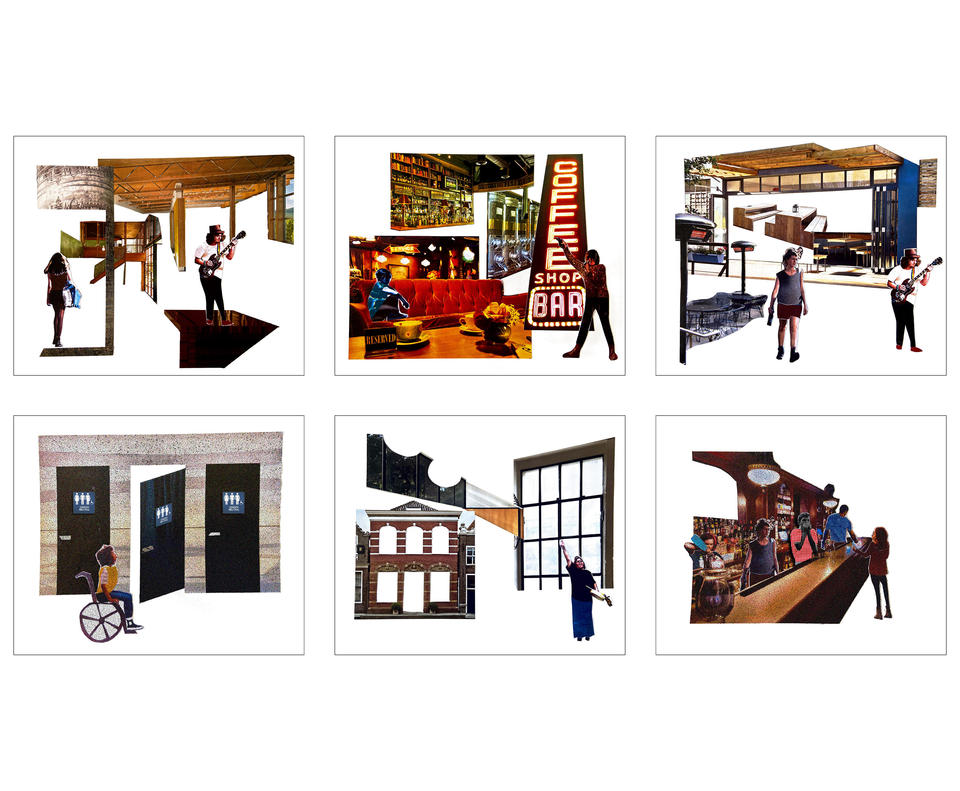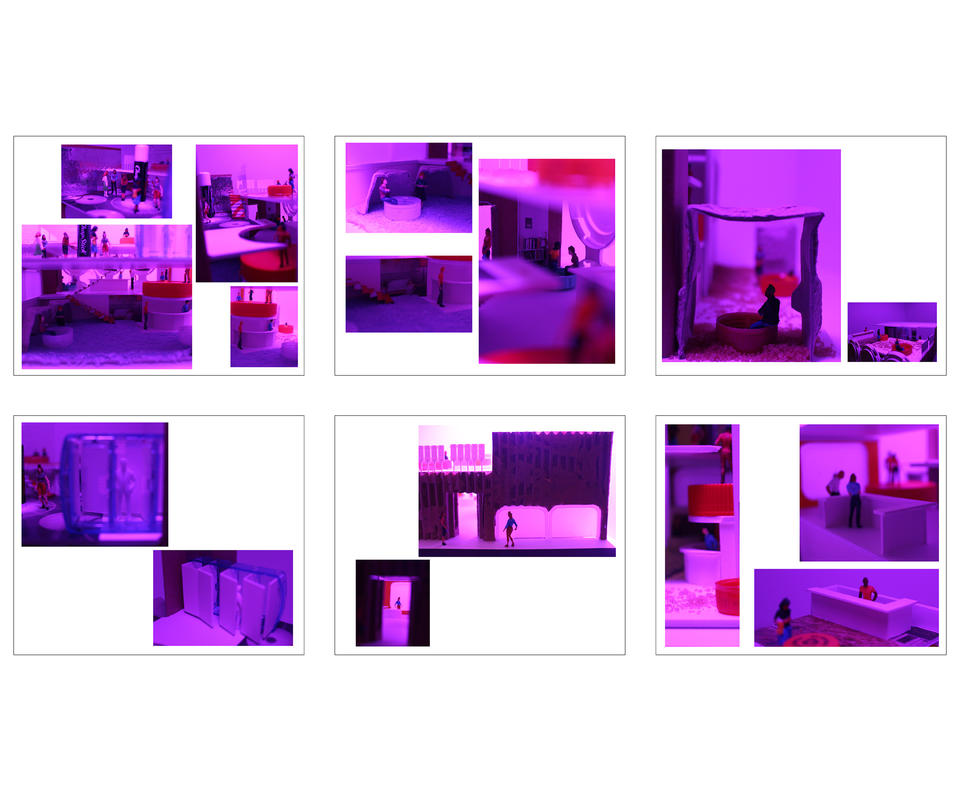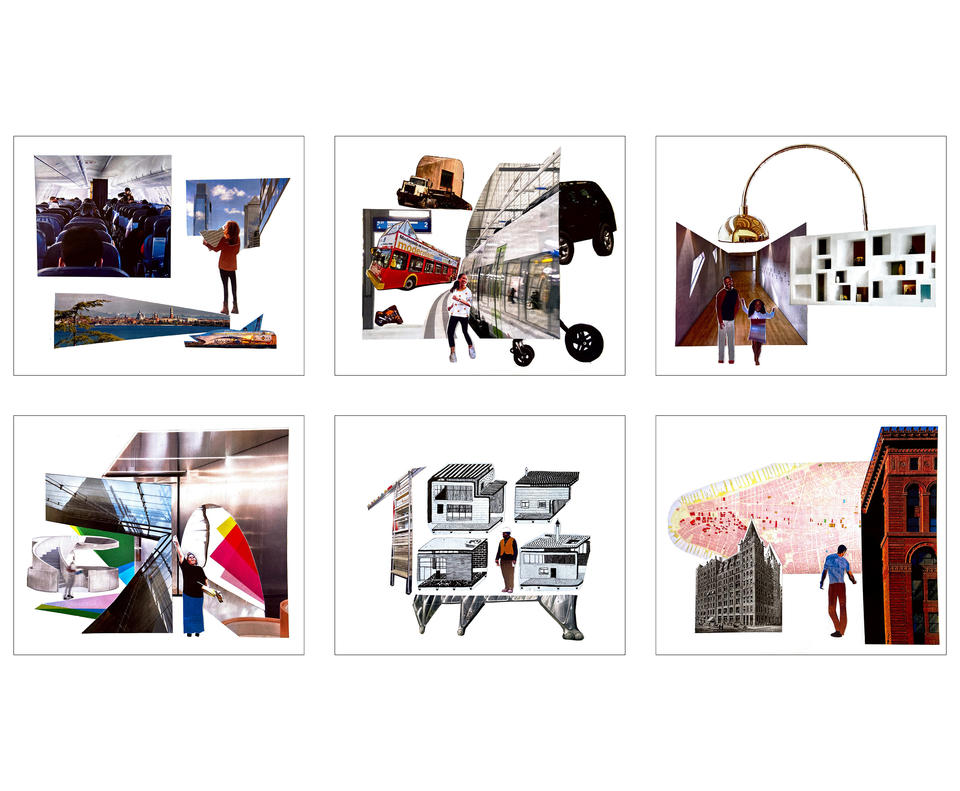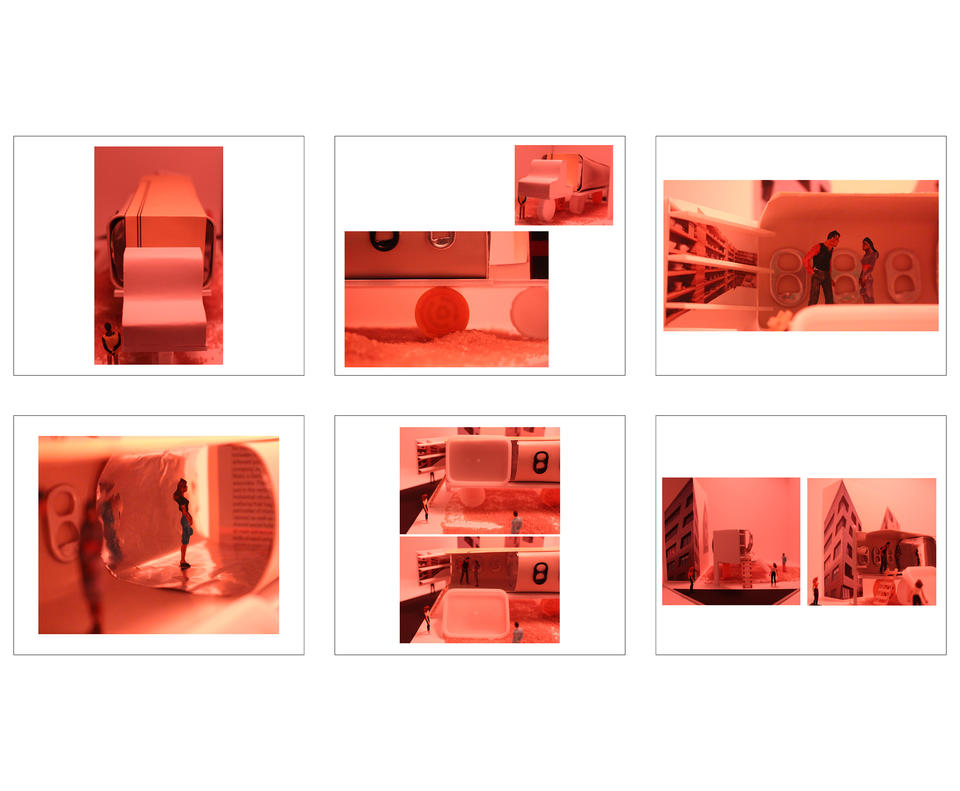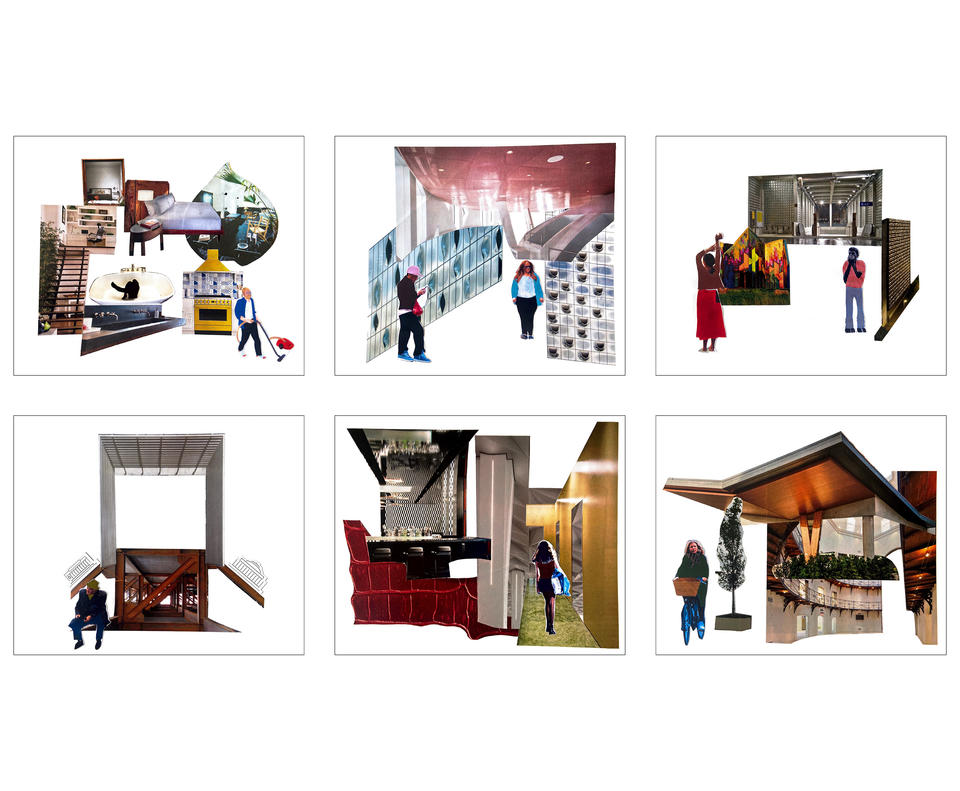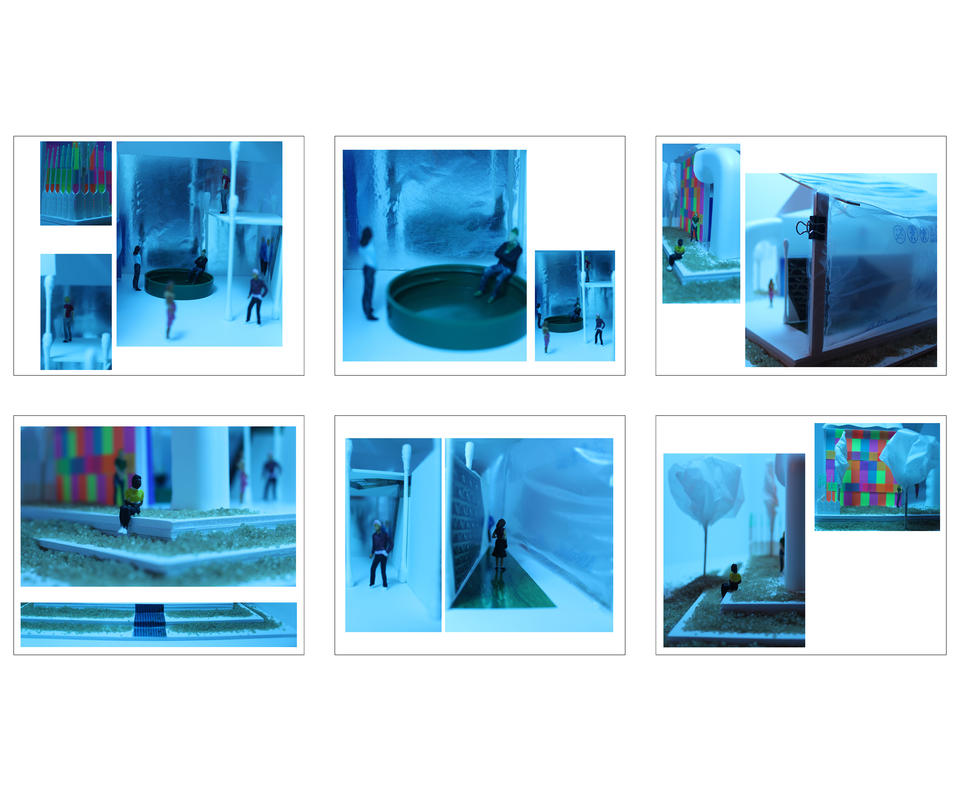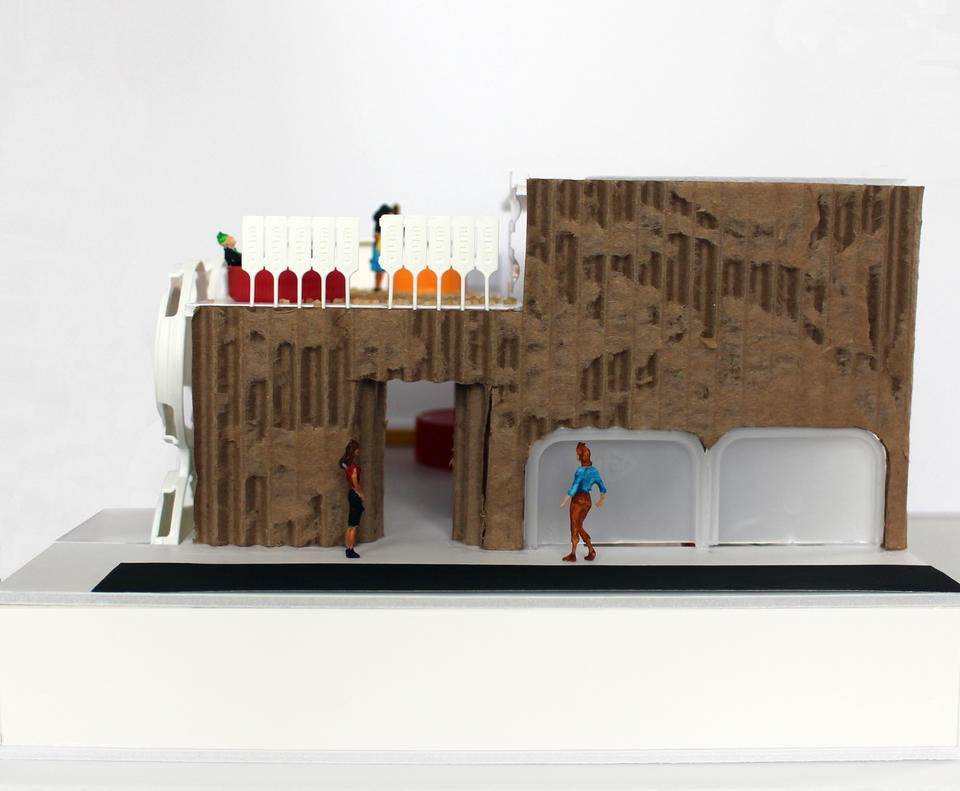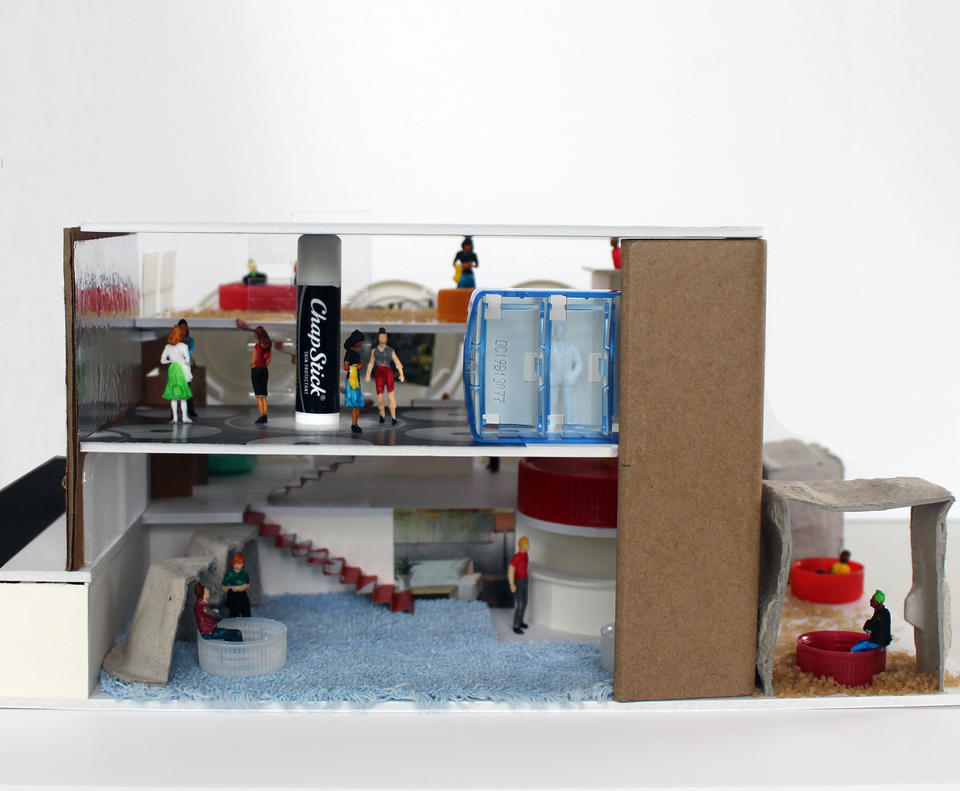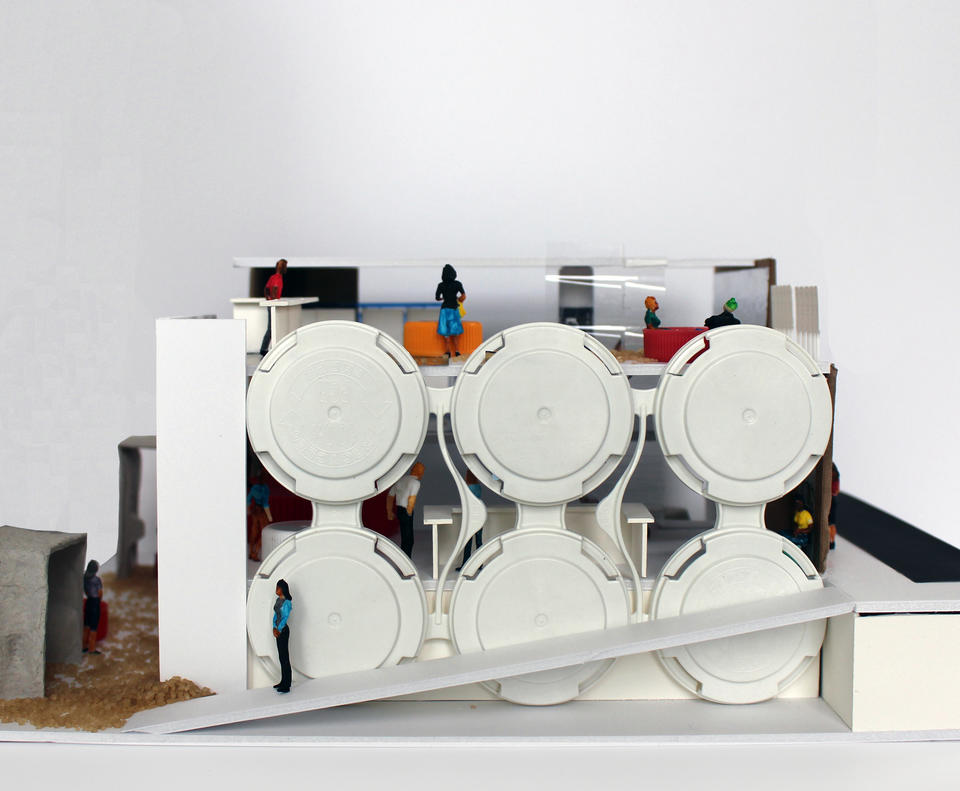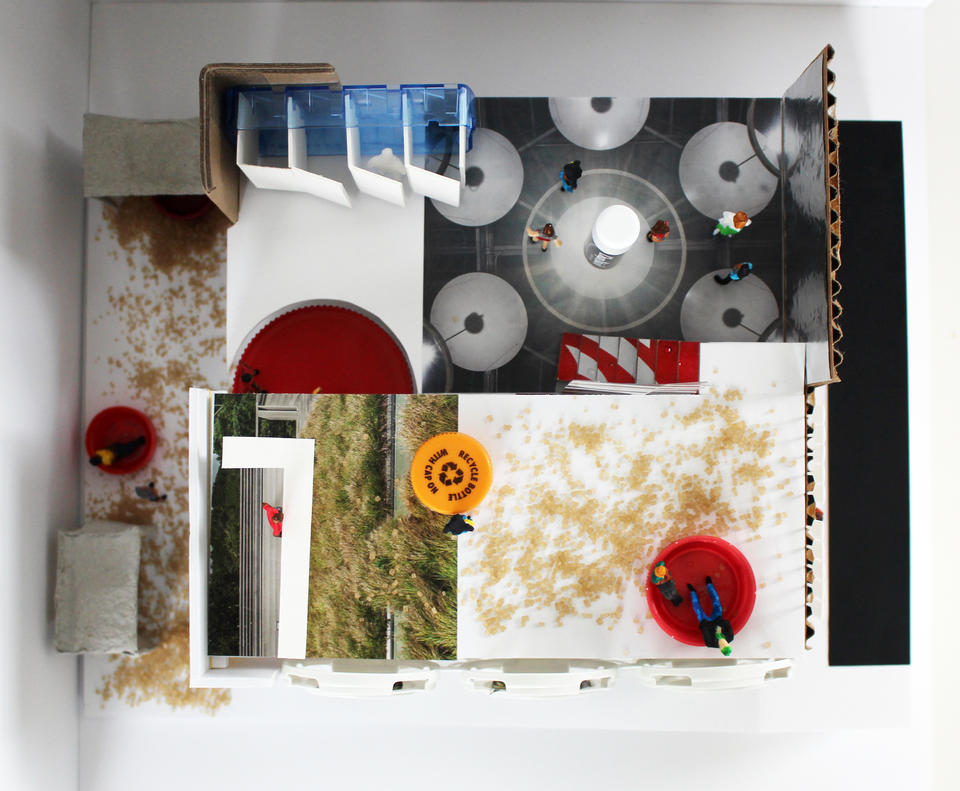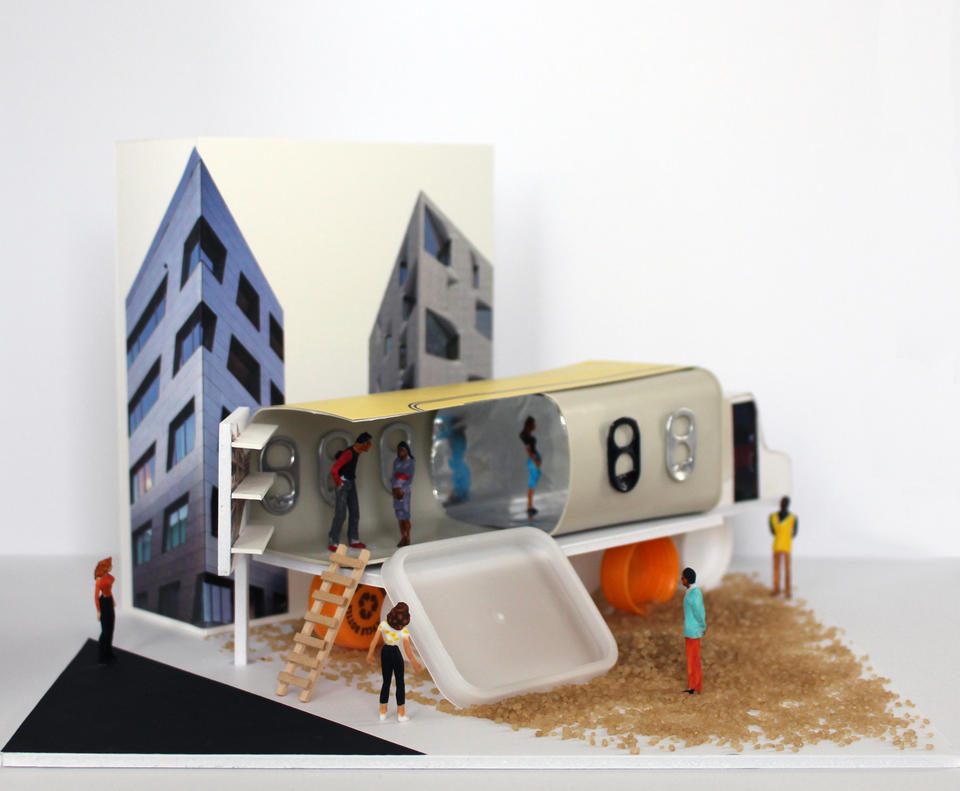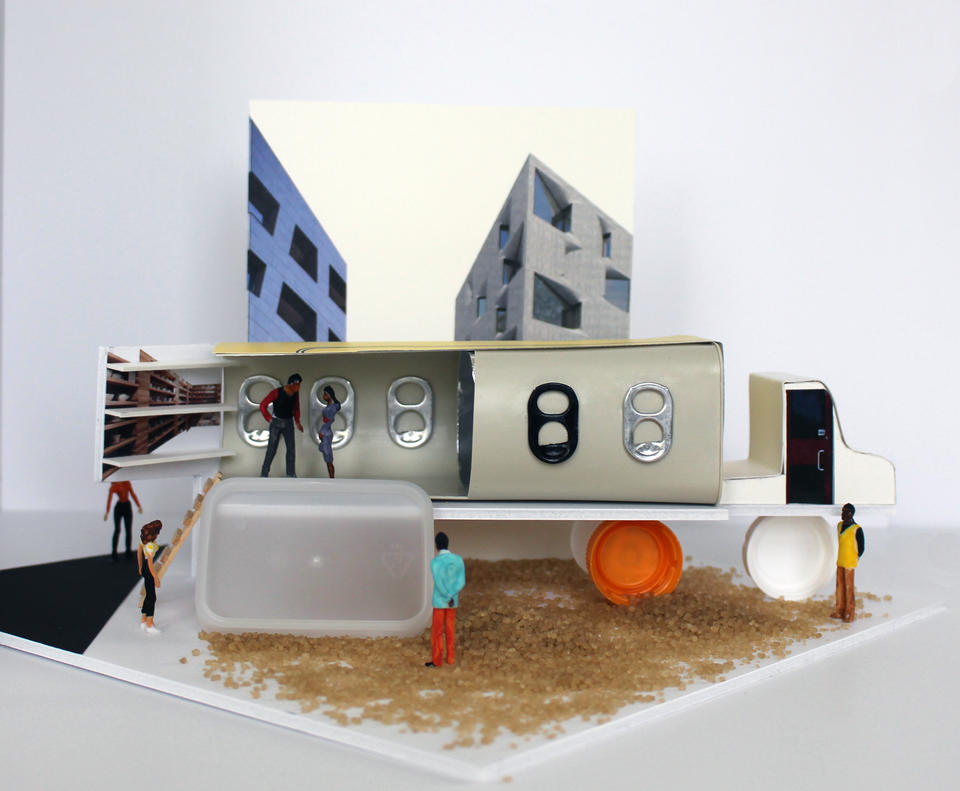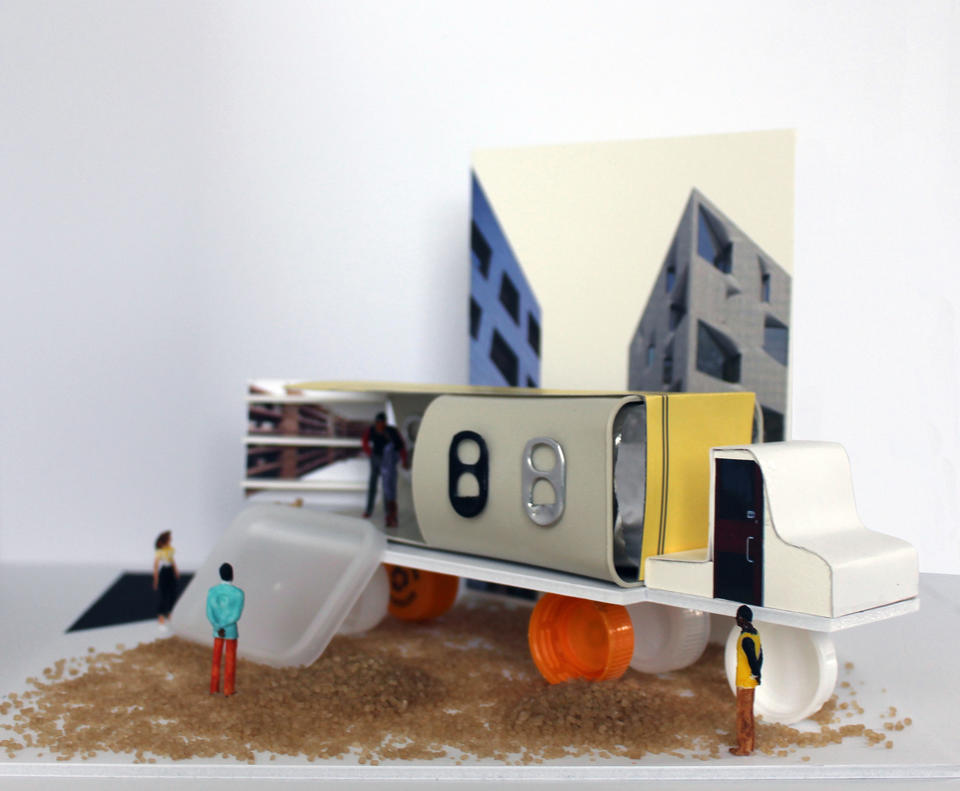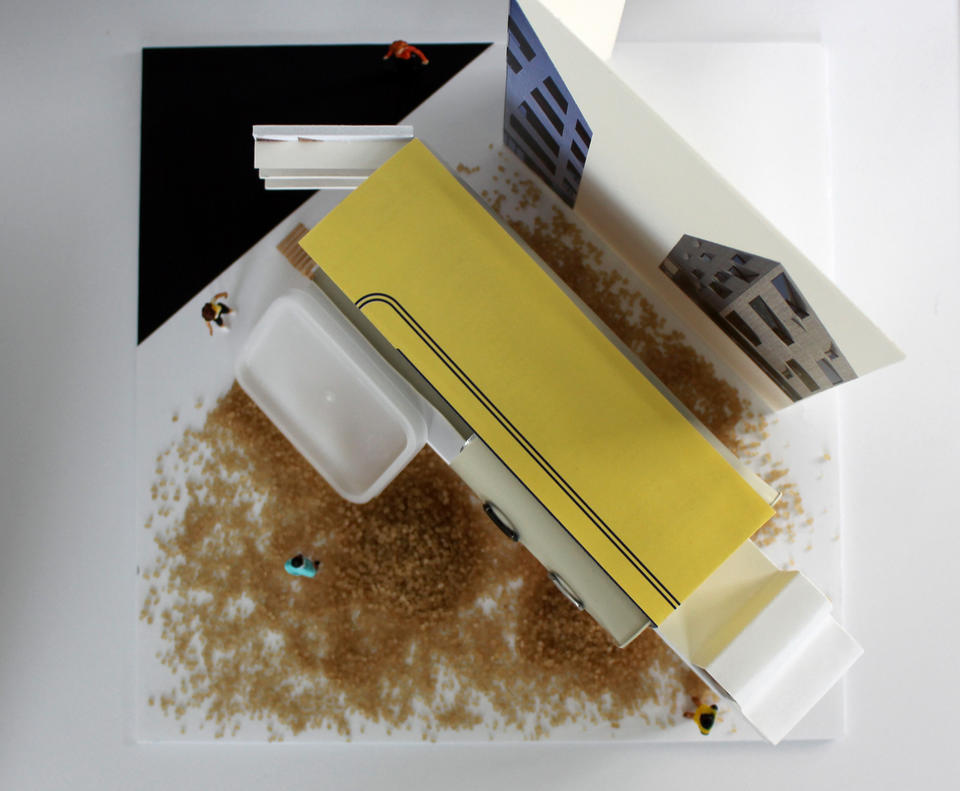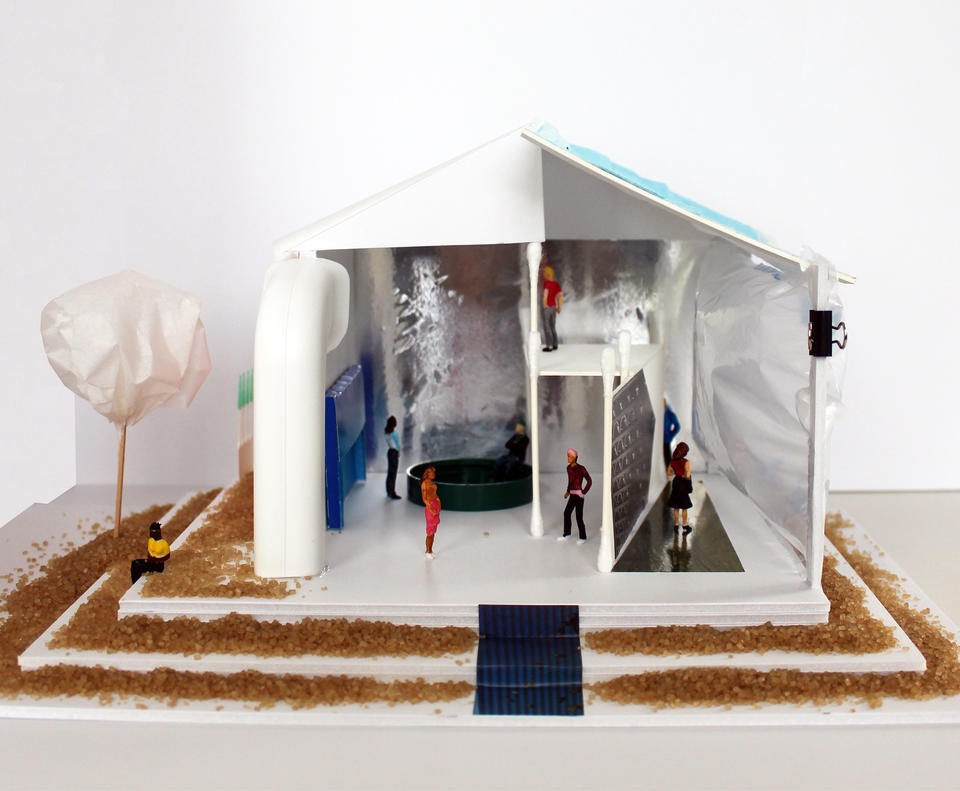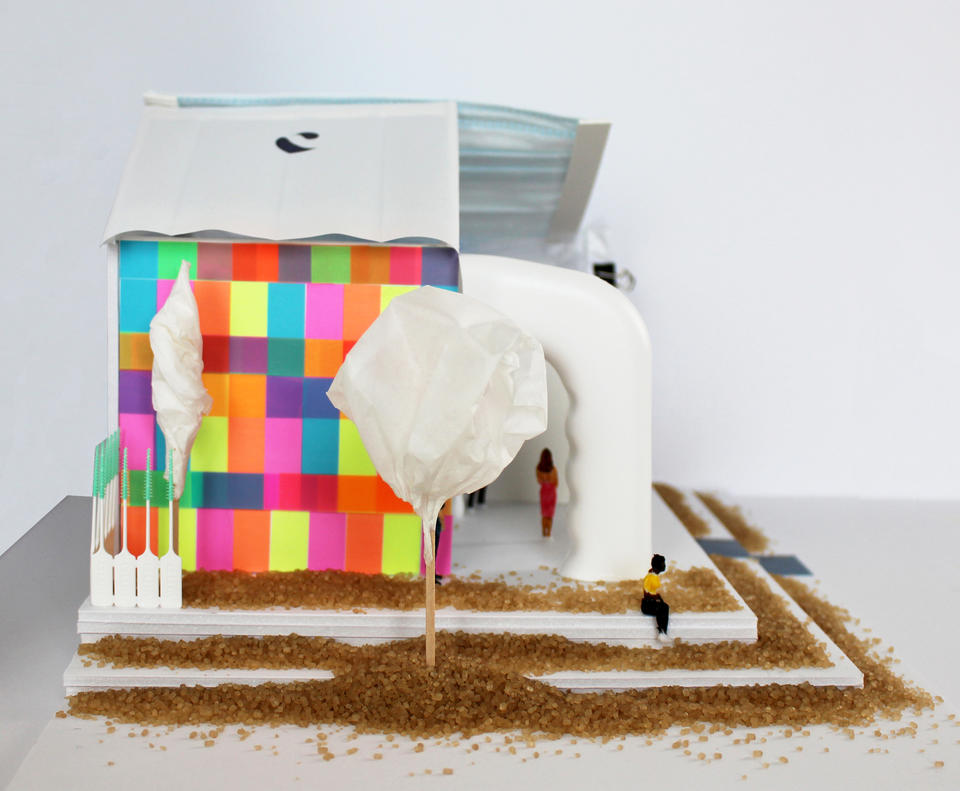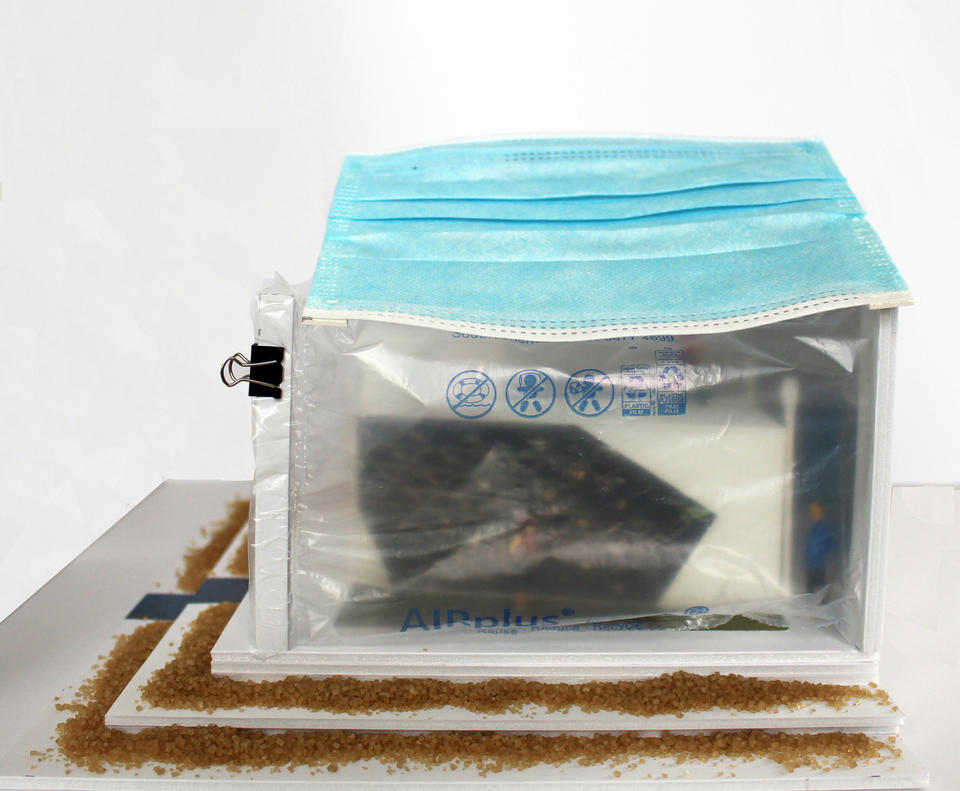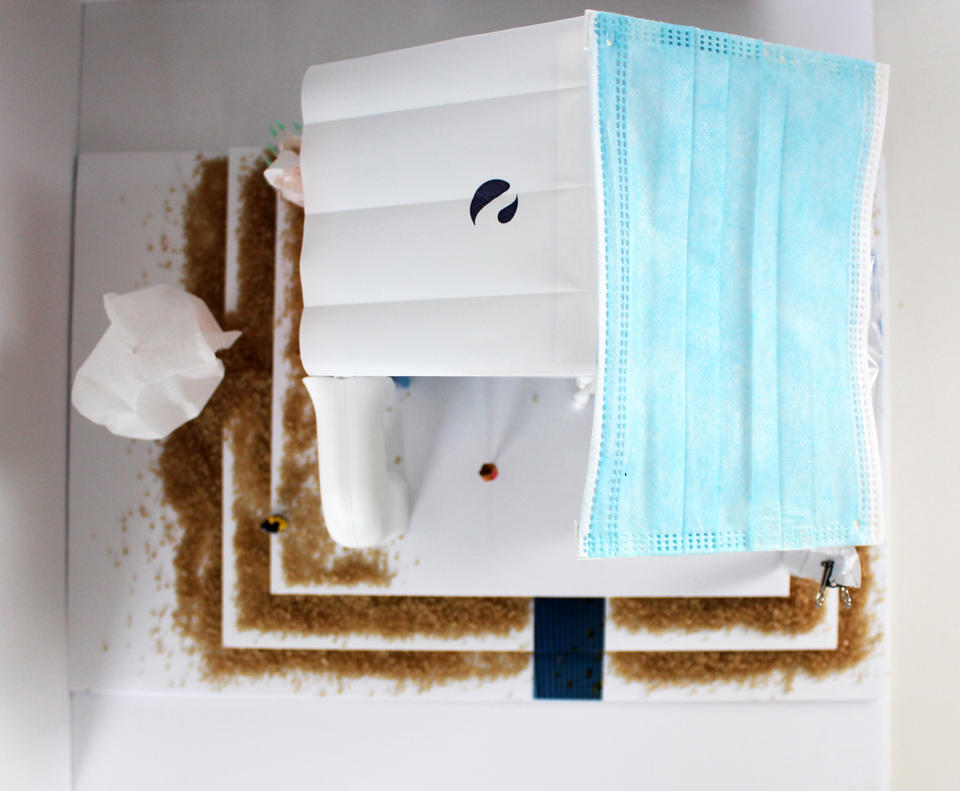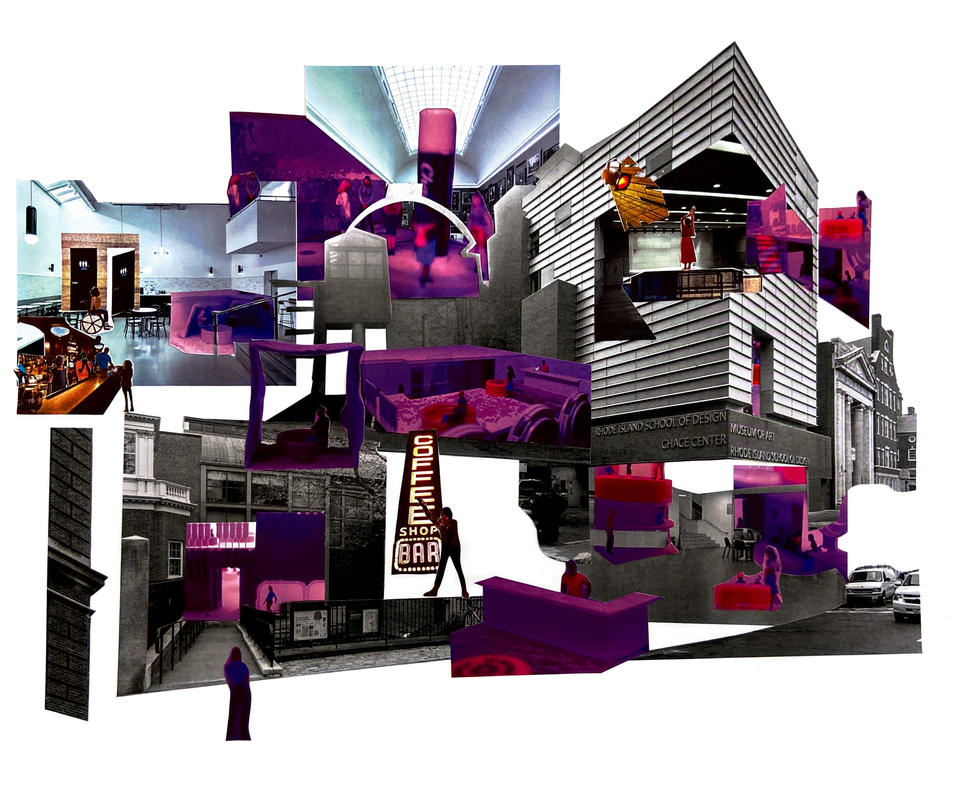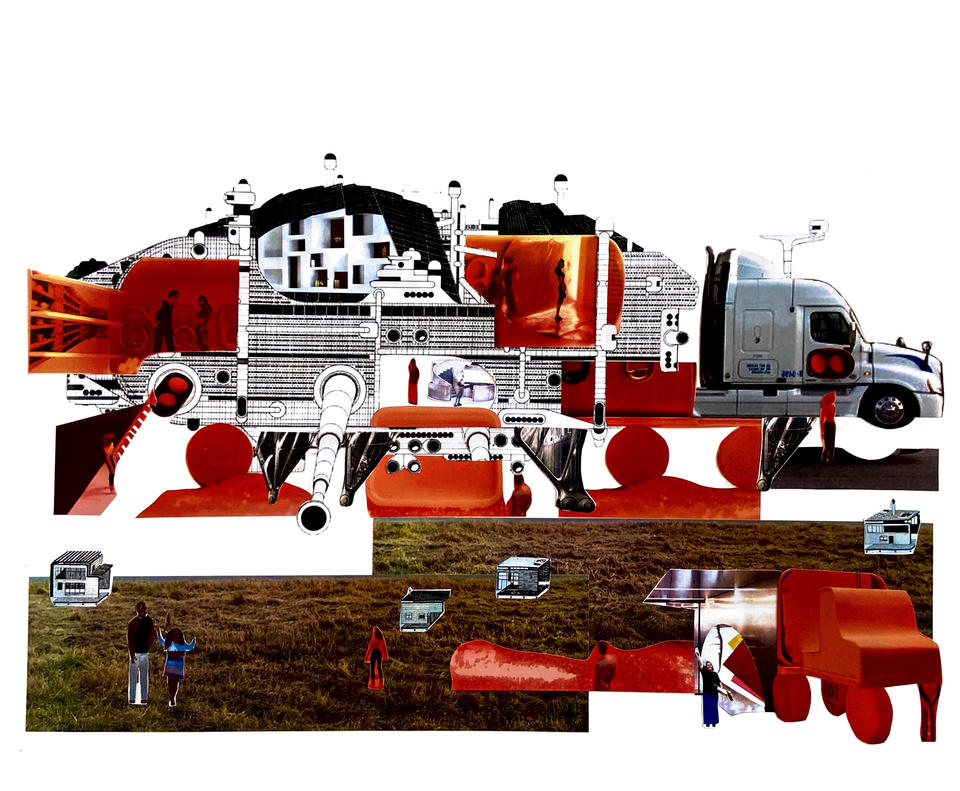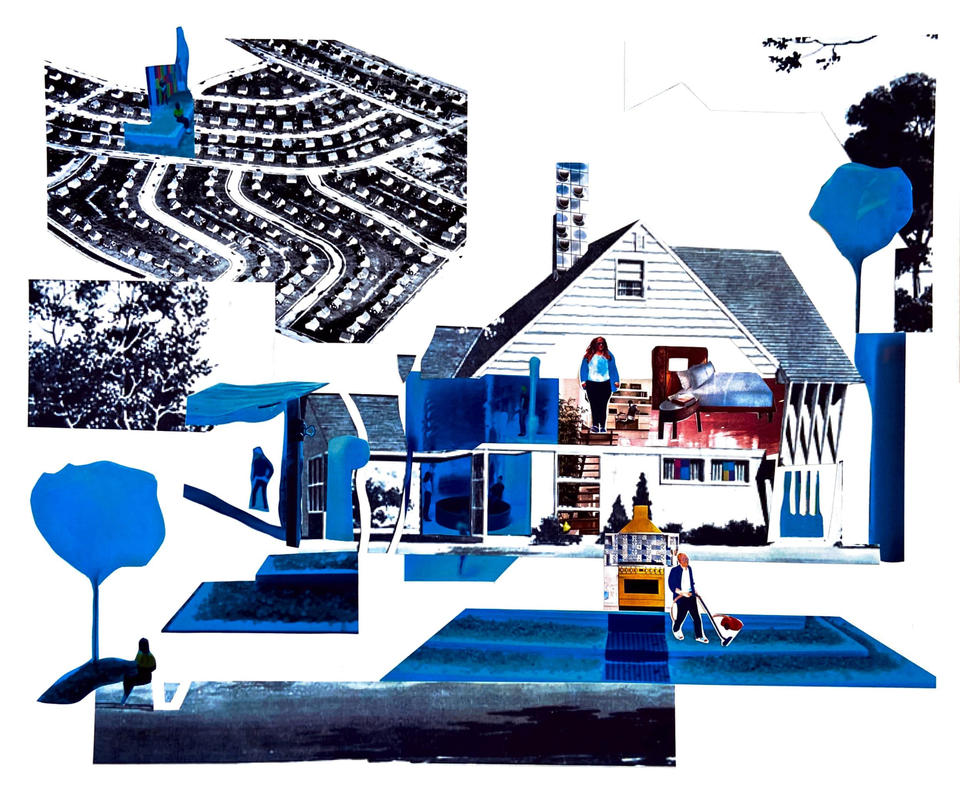Image
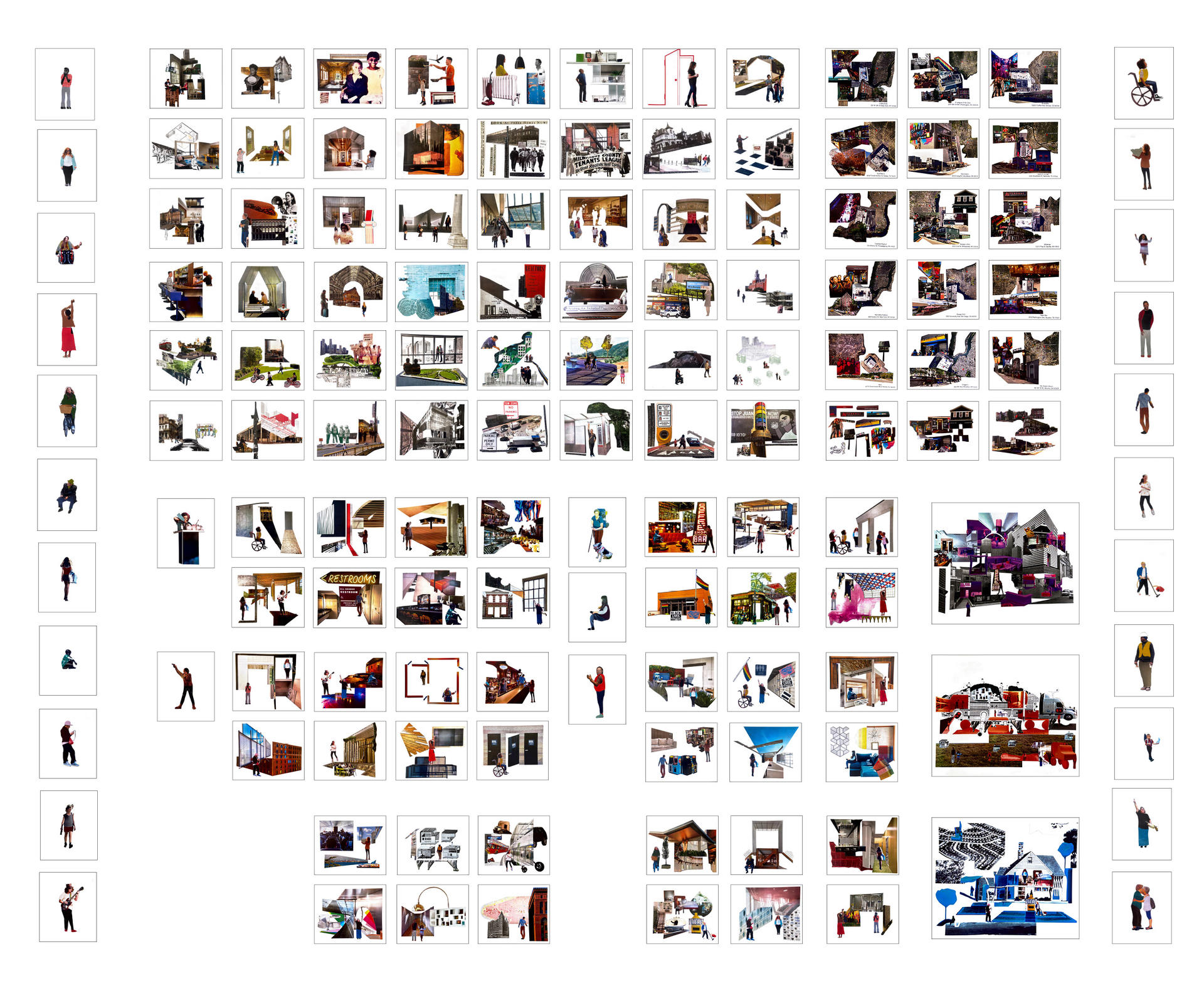
In Service of ______________
ABSTRACT
This Thesis asks these questions: who do we serve as architects, what does engagement with marginalized communities look like, what tools and methods are used to represent this process and these communities, and overall, how can architects create safe and inclusive space?
Collage is the critical mechanism for how this work is done and how I wish to practice in the future. Collage is used for documentation, representation, communication, and participation. All in the hope of designing a space with and for the queer community. Vital to the work is the idea of sampling from an existing image-based media that the non-architect can engage with. Historically, the collage is a vehicle for fragmentation, but in this thesis, it becomes a medium for integrating a community’s histories and stories along with the images, rendering a practice that was once exclusive, inclusive. Here, collage is a tool used to represent communities that architecture typically ignores, leaving space for the viewer to imaginatively engage and complete it. The research on existing spaces, interviews with community members, and the early exploration of inclusive spaces at three scales, informed the design of three sites for the queer imaginary: spaces designed with and for this community, and hopeful about a better future. Acknowledging queerness as a relational construct, each spatial proposition is enacted on an existing architecture.
Image
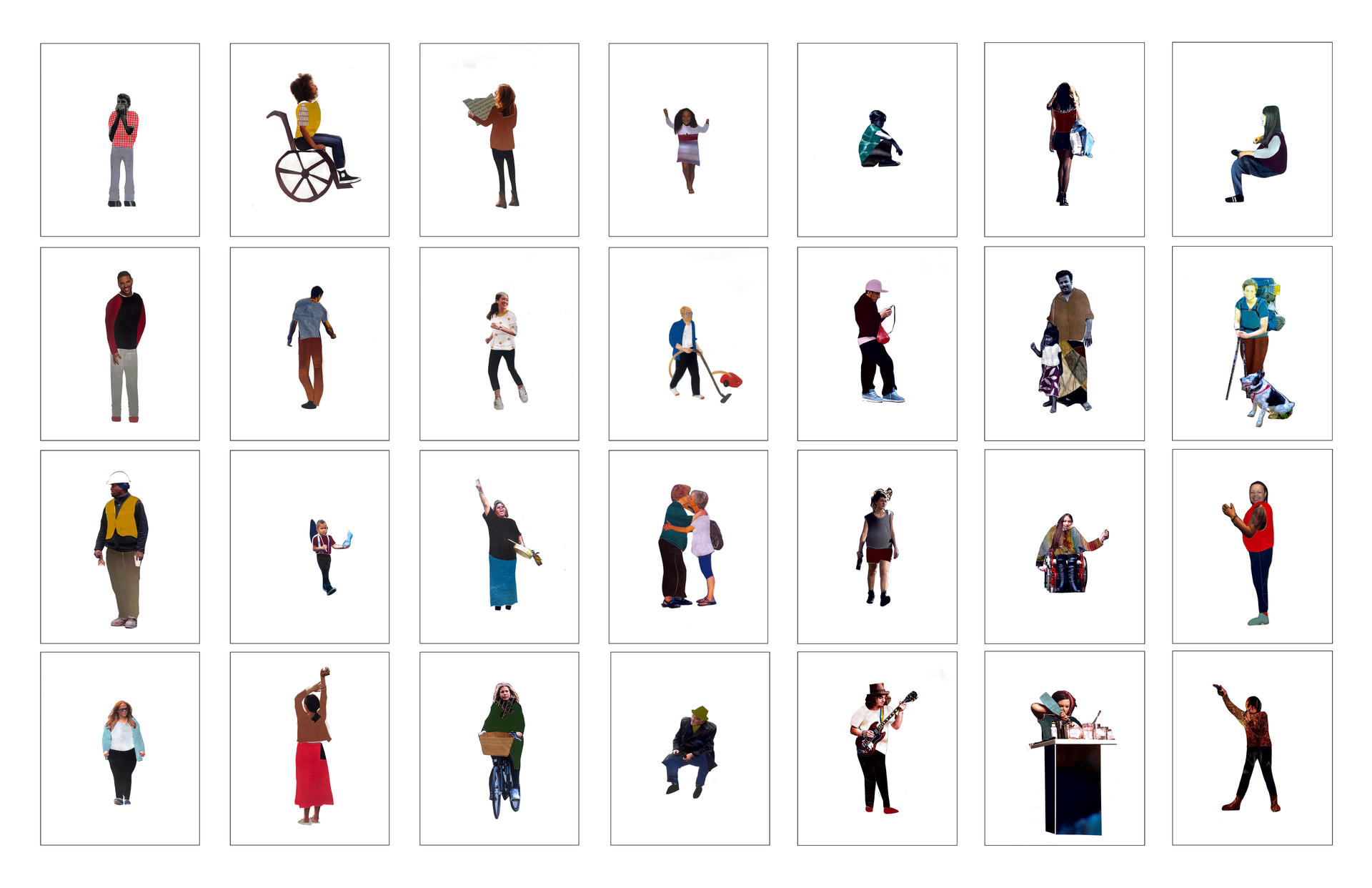
Figures
A more inclusive entourage of collaged figures was started, in recognition that it could continue, grow, and still never represent each and every person in their entirety. Architecture and architectural drawings often disregard the figure or who will occupy the spaces we design. A collaged figure takes actual photographs of people and simplifies their silhouette and clothing. It is essential to show that people are people and come with their own identities and complexities. A lifetime of work could be created by attempting to represent all people, all abilities, ages, sizes, races etc. This is my start.
Image
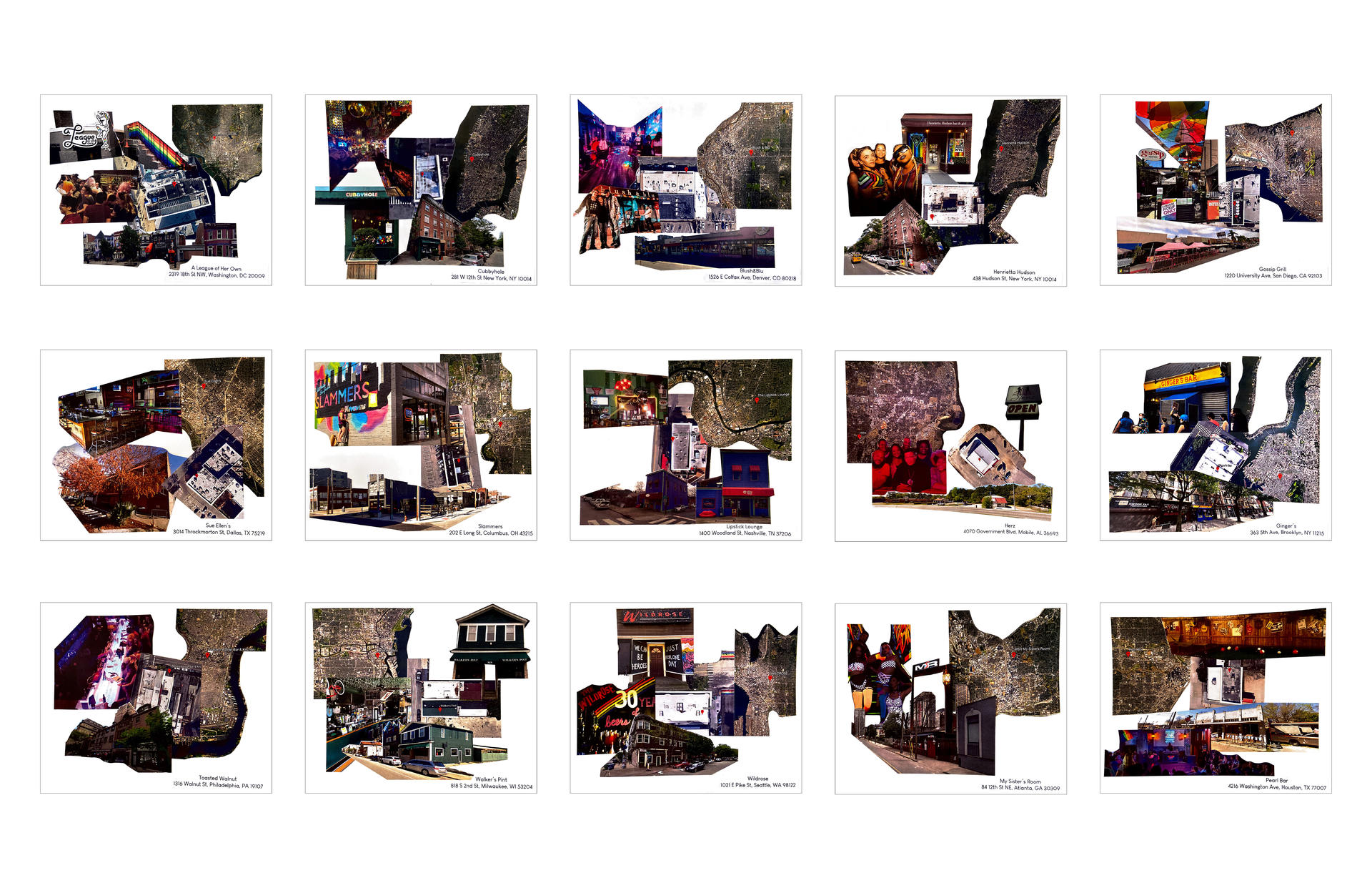
The 15 Remaining Lesbian Bars
Collages
When I began this research, the number of lesbian bars in the United States had dwindled to fifteen. Collage was used to document and compare these existing spaces. Where are they located, how are they staying open, why are others closing down? Each collage in this section represents the bars’ location, street view, and interior condition, if available. After documenting the original fifteen, I extracted the qualities apparent in many of the bars and compared and contrasted them.
3 Sites for the Queer Imaginary
Collages and Photographs of Collage Models
Utilizing a participatory design process, I initiated interviews with members of the community on the topic of what constitutes safe and inclusive space. Collage became the medium of these dialogues, representing what the interviewee described, while also eliciting their responses, and engaging their feedback. Who was interviewed was, intentionally, as broad as possible. I spoke to a bartender/bar manager, a drag king/performer, bar goers from a Midwest city, and a youth pride coordinator. As I only spoke to a handful of people, the connection of a one-on-one conversation holds a great value to participatory work and hearing the needs of the community. I was deliberately transparent that I sought time from them in order to give back to our community, a mutually beneficial relationship. Every person I talked to was eager and excited to talk about the subject. This participatory process used collages to communicate.
The research on existing queer spaces, interviews with community members, and the early exploration of inclusive spaces at three scales, informed the design of three sites for the queer imaginary: spaces designed with and for this community, and with the hope for a better future. Acknowledging queerness as a relational
construct, each spatial proposition is enacted on an existing architecture. Within the three designs are also three strategies and siting’s for queering space. All radical in their siting, as well as the actions performed on them.
Each of the propositions followed the evolution of initial collages (to represent an idea), found object models (3 dimensional representation of the spaces merged from several collages), photographs of the models (moment of post-production to de familiarize the objects and let the spaces be slowly read and understood), and finally, the queering of an existing architecture (combining all these ideas and methodologies together). A queer imaginary is radical, it is speculative, it is hopeful, and something you feel close to grasping but is just out of reach.
Site 1: Queer Bar
Found Object Model
The first strategy addresses collaborative design for a public, mixed use, and inclusive space for today. A lesbian bar may not be the response or label for how best to serve this community but, “without a space, we lose power, validity, communal safety, and access to intergenerational dialogue”. The interviews were used to re-imagine the lesbian bar into a queer space that would address the needs of multiple identities, demographics, and ages. Many requests were reoccurring within the interviews. Those included a space that has multiple functions and multiple spaces within, an outdoor space, spaces that are more relaxed, gender neutral restrooms, windows and natural light while still allowing for privacy, and, most importantly, diversity of people and staff within the spaces. The RISD Museum was the public space enacted on to better serve the queer community. Unlike a museum this queer imaginary can be danced in, have loud music played, performances can occur, and also have quiet areas for conversation or daytime activities for families. Each space is uniquely re-programed to serve a different experience and serve a city in need of spaces like this.
Site 2: Archive on Wheels
Found Object Model
The second radical queer imaginary is all about mobility, travel, distribution of an archive, and deployment on site in a near future. The archive on wheels is a spatial proposition on Archigrams, Walking City. The archive arrives on site, lands in an accessible, and visible location, plants its feet in the landscape, deploys its ladders and ramps, opens it shelfs and reveals the history of a community often disregarded and forgotten. Its pieces and parts disperse on the landscape and allow those from small towns and underserved queer communities into an imaginary they could only dream of in the past. Access to knowledge and views from the past allow us to appreciate the now and strive for an even better future.
Site 3: The Communities House
Found Object Model
The final strategy is an inversion of the private home, The Communities House. A queering of the domestic home and re-imagining the notion of family occurs on the 1950s Levittown suburban house. A house and neighborhood meant for a particular family at a distinct time in history. Queer people often find their chosen families in their community. A place for this re-imagined family to gather, in the exact place they are told not to be, will exist in this queer future. The power in this siting is the relation to the neighborhood and the revision of family and visibility. This intervention is everything we are told not to be, loud, proud, visible, and the reversal of what is private or what we are told should be private. You can see in when we want you to and have privacy when we do not. Large gestures and reflections of ourselves make this a future we can hope for.
The Queering of an Existing Architecture
Collage and Photographs of Collage Models

